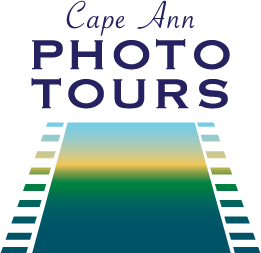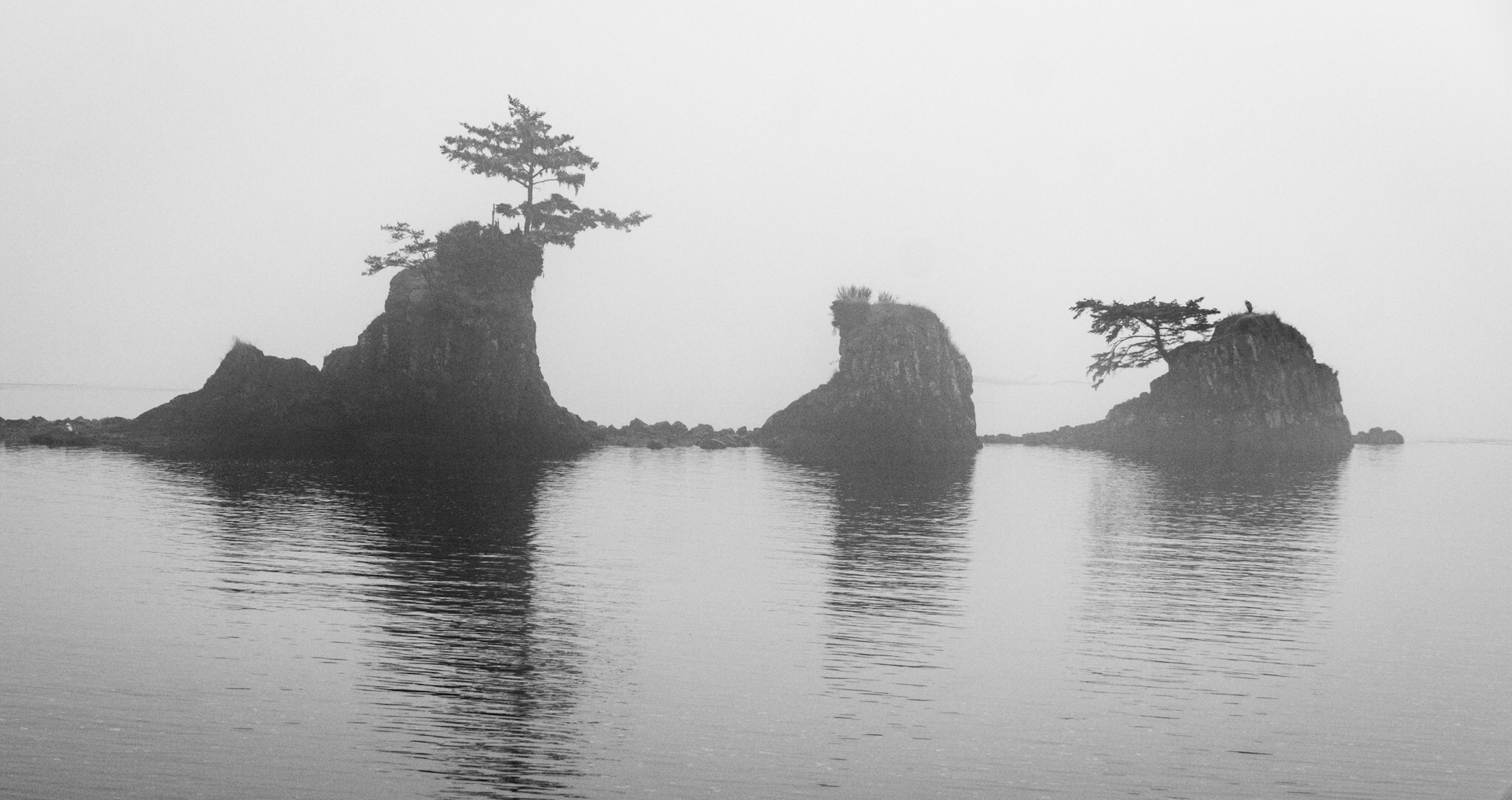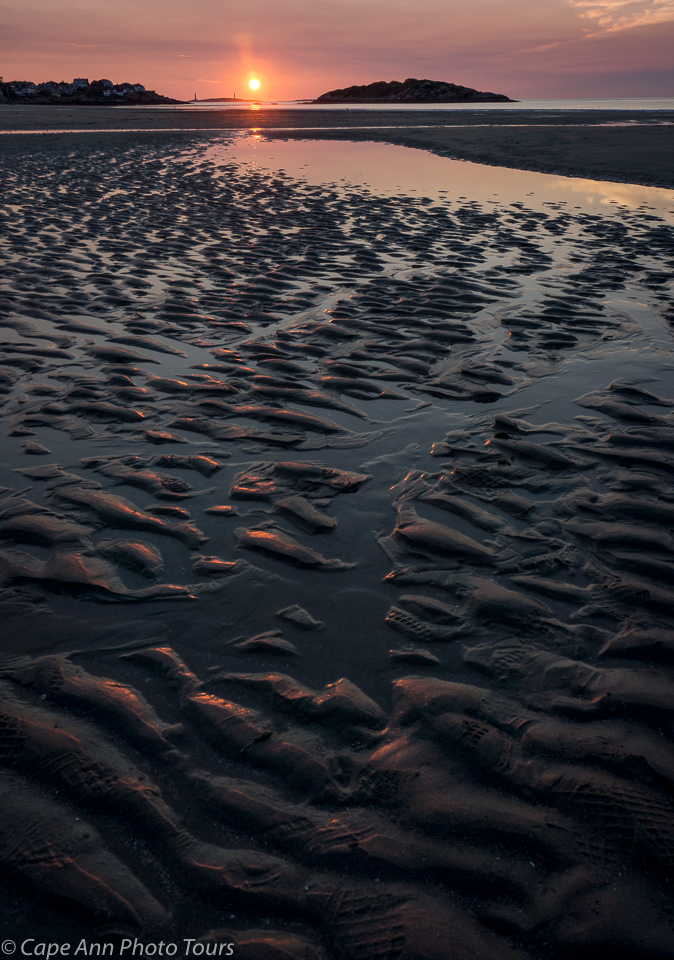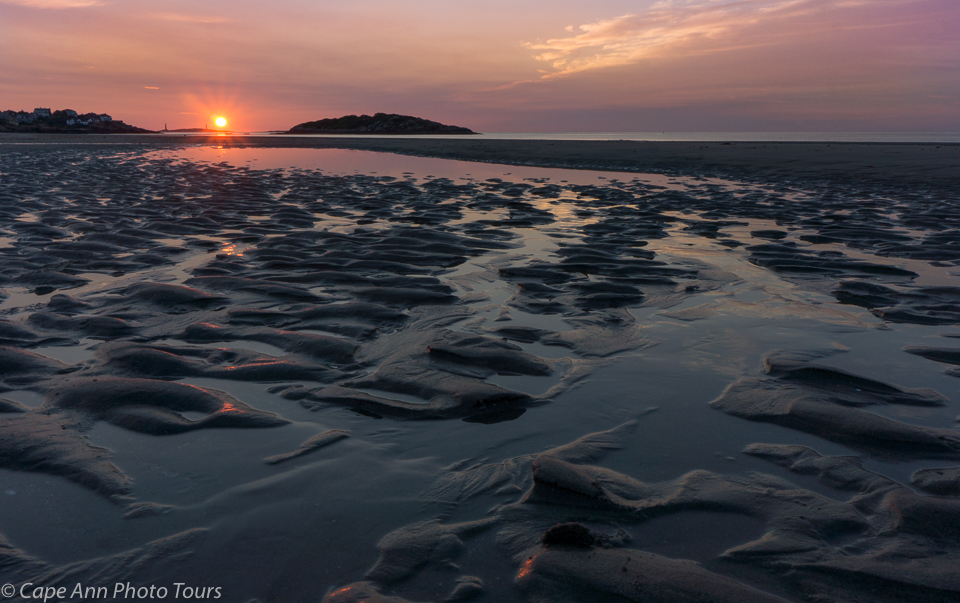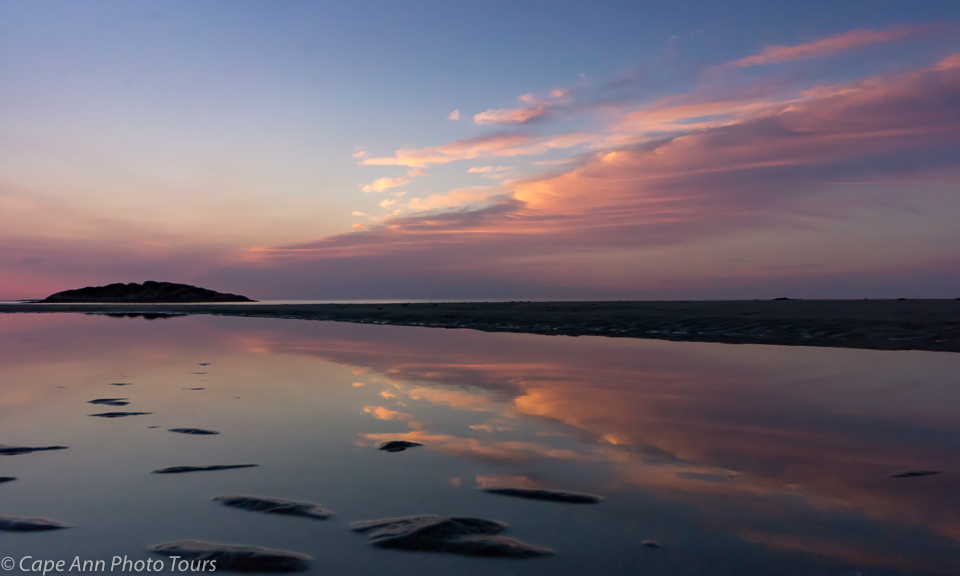Ok, so what do you do when you travel six hours on a flight pull into the hotel exhausted and wake up the next morning to gray skies and fog? You pray it gets better! That being said praying kind of worked.
Let me explain. We left our hotel with gray skies and headed for the fog enshrouded coast not knowing if the fog would hold all day – it did. What a disappointment. Our trip down route 101 along the coast was another six hours of not seeing much. The beautiful scenery along 101 was invisible to us as we sped by listening to pod casts our sons’ had downloaded on their phones.
We stopped every once in a while to make a shot or two of the fog covered shore or islands peering through the mist. We did not bother to stop at Cannon Beach as it was covered in fog. When we arrived at our destination on Bandon Beach on the south shore just below Coos Bay we were met with an overlook of incredible beauty but covered by fog.
We decided to put long pants and hiking shoes on to climb down the massive set of stairs to the beach. We were met with incredible amounts of huge driftwood – wow, a B&W photographers dream. The driftwood and fog made for some great images.
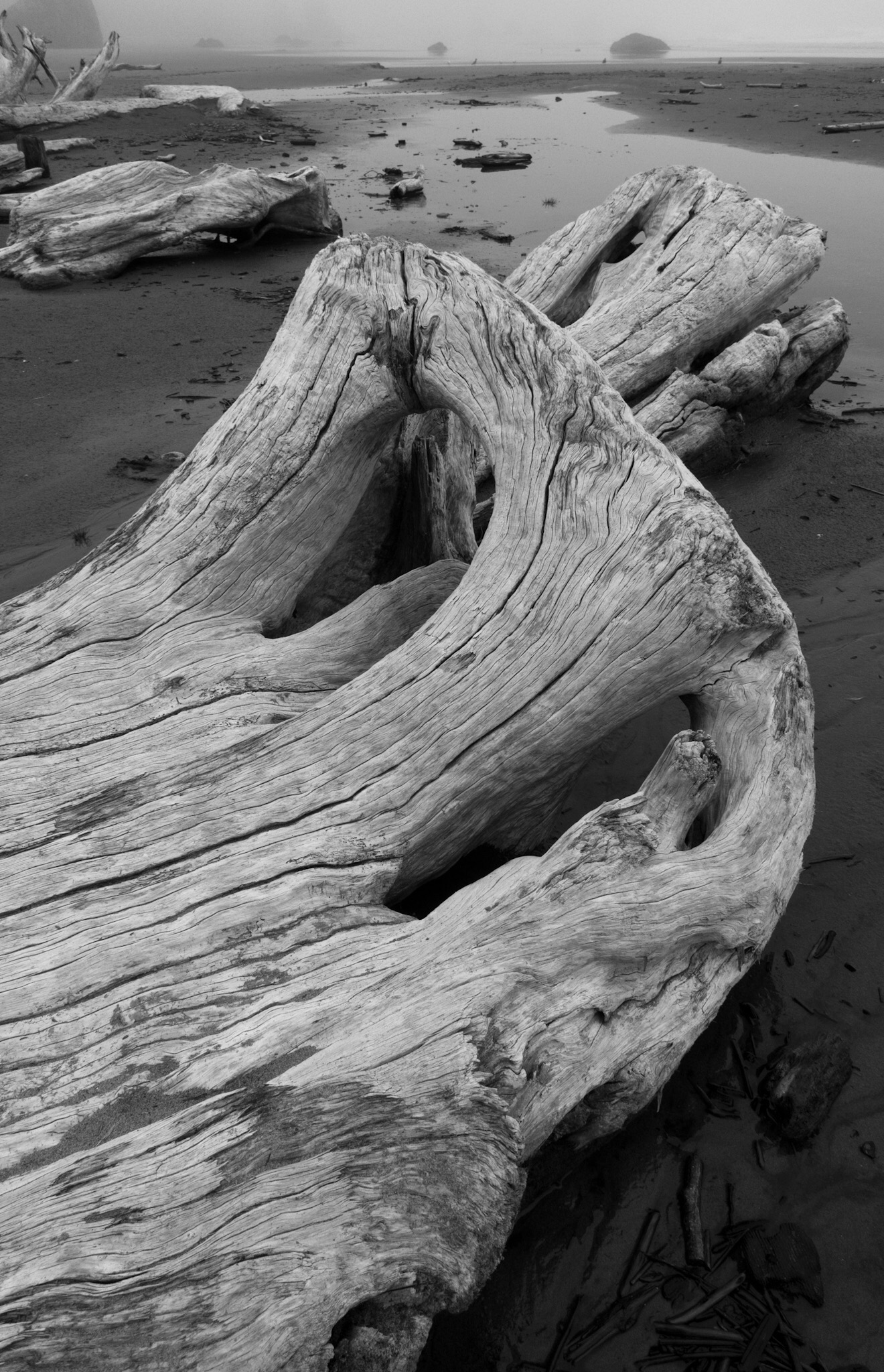
Plus there was no one on the beach, yay! I had a great time poking around the giant stumps. The fog started to clear a little as sunset approached but we only got a sliver of color. The next morning I was up early hoping for some nice light and I was not disappointed.
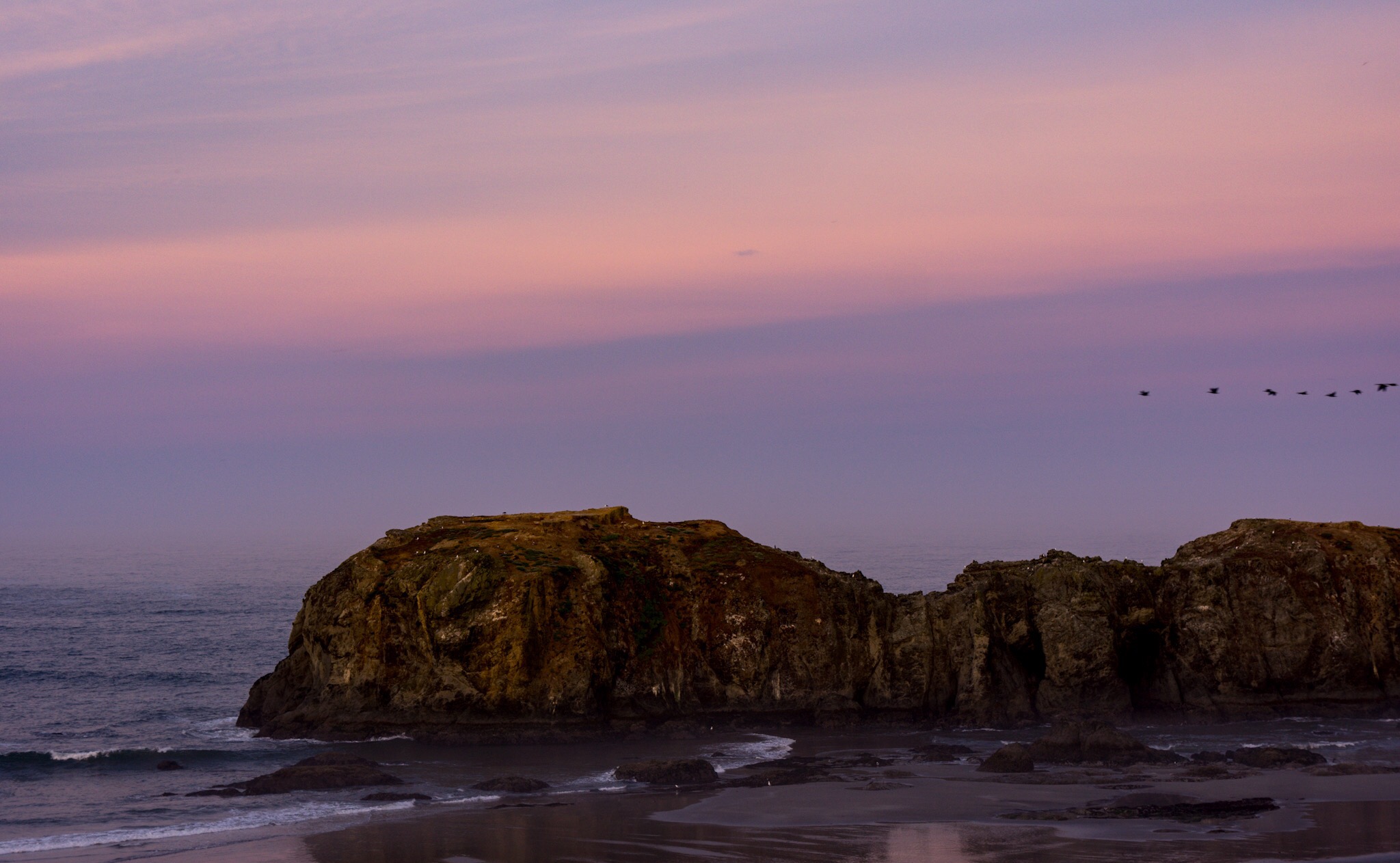
The shot above is not my best one. I have three frames with the flock of geese in it but the thumb nails on my iPad are so small on import I could not tell which one I wanted.
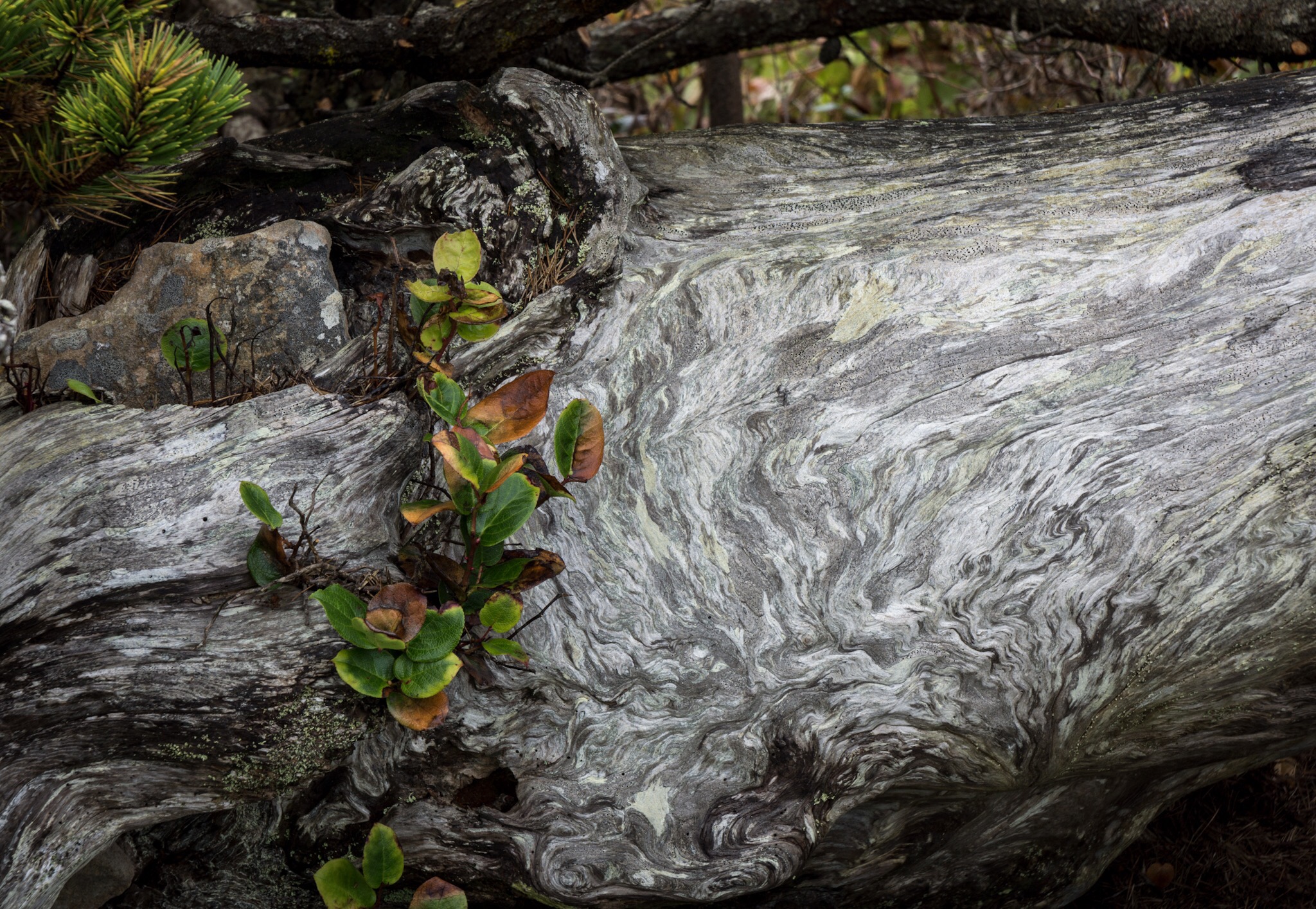
Walking around in the early morning light on the beach and on the bluff was great, the scenery was outstanding.
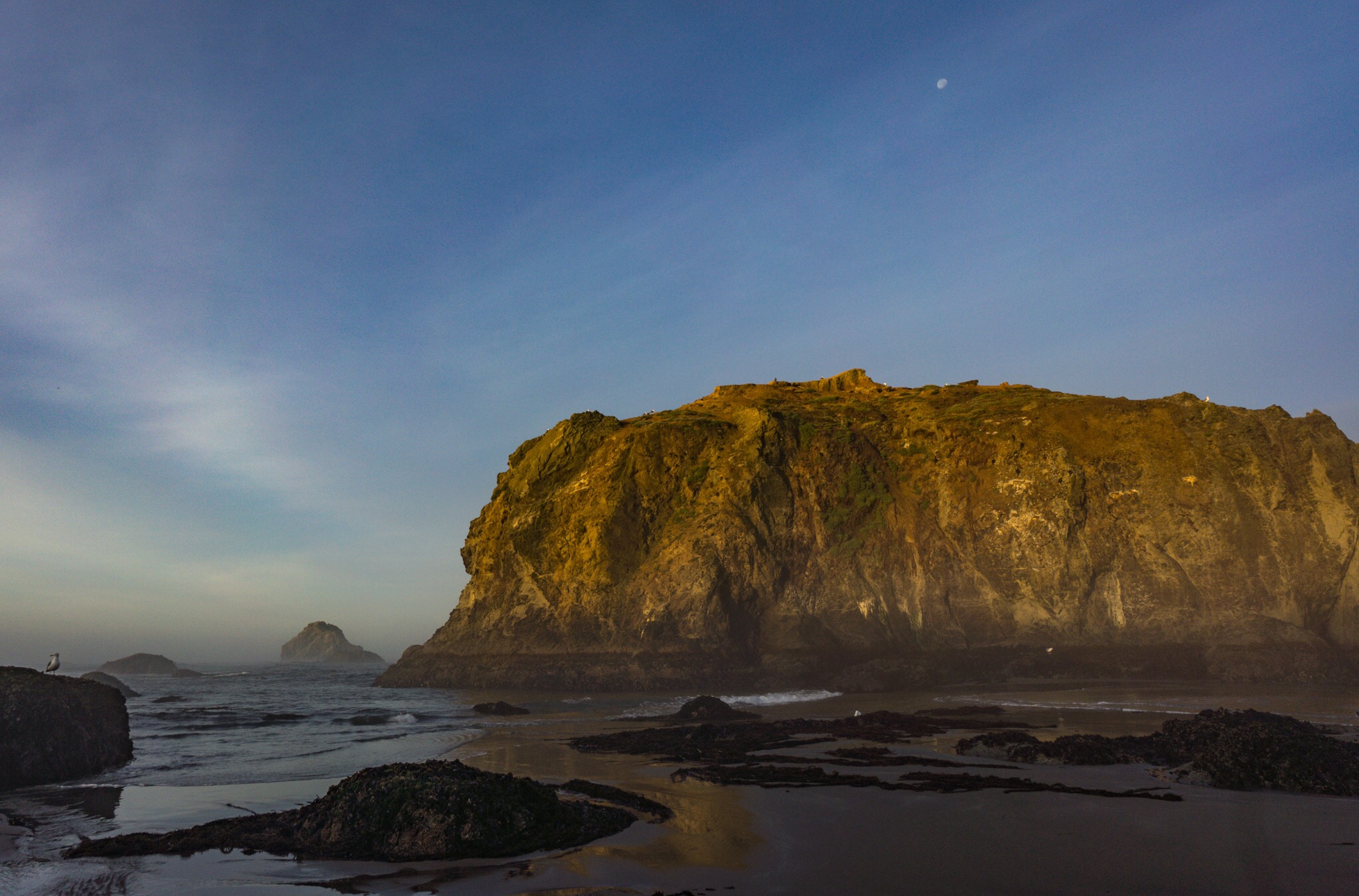
As the light rose and made it over the cliff face it was almost like alpen glow the way it just lit the top portions of these giant edifices. I met some nice photogs along the way who were participating in workshops. This the end of part one. More to come on a day of travel to shoot lighthouses in horrible light and another morning among the giant rocks!
